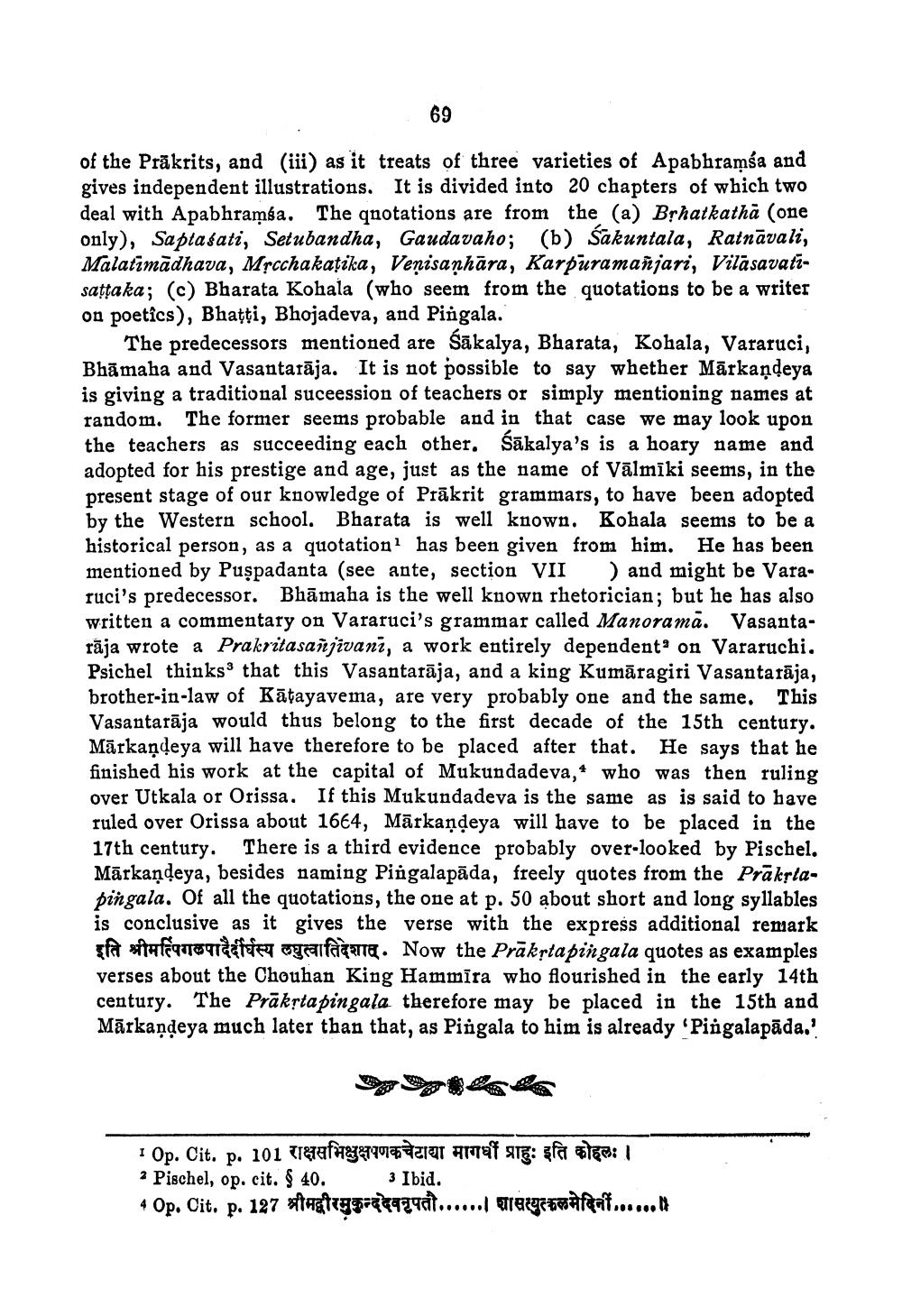________________
69
of the Prākrits, and (iii) as it treats of three varieties of Apabhramsa and gives independent illustrations. It is divided into 20 chapters of which two deal with Apabhramsa. The quotations are from the (a) Brhatkathā (one only), Saplaćati, Setubandha, Gaudavaho; (b) Sakuntala, Ratnāvali, Malatimādhava, Mrochakațika, Venisanhāra, Karpuramanjari, Vilāsavatisattaka; (c) Bharata Kohala (who seem from the quotations to be a writer on poetics), Bhatti, Bhojadeva, and Pingala.
The predecessors mentioned are Śákalya, Bharata, Kohala, Vararuci, Bhāmaha and Vasantarāja. It is not possible to say whether Mārkandeya is giving a traditional suceession of teachers or simply mentioning names at random. The former seems probable and in that case we may look upon the teachers as succeeding each other. Sākalya's is a hoary name and adopted for his prestige and age, just as the name of Vālmīki seems, in the present stage of our knowledge of Prākrit grammars, to have been adopted by the Western school. Bharata is well known. Kohala seems to be a historical person, as a quotation? has been given from him. He has been mentioned by Puşpadanta (see ante, section VII ) and might be Vararuci's predecessor. Bhāmaha is the well kuown rhetorician; but he has also written a commentary on Vararuci's grammar called Manoramā. Vasantarāja wrote a Prakritasanjivani, a work entirely dependent on Vararuchi. Psichel thinks that this Vasantarāja, and a king Kumāragiri Vasantarāja, brother-in-law of Kāțayavema, are very probably one and the same. This Vasantarāja would thus belong to the first decade of the 15th century. Mārkandeya will have therefore to be placed after that. He says that he finished his work at the capital of Mukundadeva, who was then ruling over Utkala or Orissa. If this Mukunda deva is the same as is said to have ruled over Orissa about 1664, Mārkandeya will have to be placed in the 17th century. There is a third evidence probably over-looked by Pischel. Mārkaņdeya, besides naming Pingalapāda, freely quotes from the Prākslapingala. Of all the quotations, the one at p. 50 about short and long syllables is conclusive as it gives the verse with the express additional remark इति श्रीमल्पिंगलपादैर्दीर्घस्य लघुत्वातिदेशात . Now the Prakrtapingala quotes as examples verses about the Chouhan King Hammīra who flourished in the early 14th century. The Prākrta pingala therefore may be placed in the 15th and Mārkandeya much later than that, as Pingala to him is already 'Pingalapāda.'
1 Op. cit. p. 101 TraafhY299061a artat sre: sfat lea: 1 ? Pischel, op. cit. $ 40. 3 Ibid. 4 Op. cit. p. 127 stigtrypracaayai...... TretycFahfaat......




